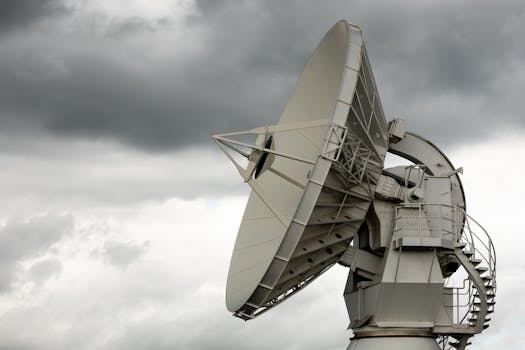
GEO Satellites: Introduction to the Focus Keyword
GEO satellites, or Geostationary Earth Orbit satellites, are a type of satellite that orbits the Earth at an altitude of approximately 36,000 kilometers. The focus keyword, GEO satellites, is a crucial aspect of modern telecommunications, navigation, and weather forecasting. At the beginning of our content, we will delve into the world of GEO satellites, exploring their history, technology, and applications. The term GEO satellites refers to a satellite that is placed in a geostationary orbit, which means it remains stationary relative to a fixed point on the Earth’s surface. This allows GEO satellites to provide continuous coverage of a specific region, making them ideal for telecommunications, navigation, and weather forecasting.
History of GEO Satellites
The concept of GEO satellites was first proposed by scientist Arthur C. Clarke in 1945. However, it wasn’t until the 1960s that the first GEO satellite was launched. The Syncom 2 satellite was launched on July 26, 1963, and was the first satellite to reach geostationary orbit. Since then, numerous GEO satellites have been launched, with many countries and organizations operating their own fleets. The technology behind GEO satellites has evolved significantly over the years, with advances in materials, propulsion systems, and communication equipment.
Technology Behind GEO Satellites
GEO satellites are equipped with a range of technologies that enable them to operate in space. These include solar panels for power generation, propulsion systems for station-keeping, and communication equipment for transmitting and receiving data. GEO satellites also have to withstand the harsh conditions of space, including extreme temperatures, radiation, and debris. The antennas and transponders on GEO satellites are designed to receive and transmit signals to and from Earth, allowing for communication, navigation, and weather forecasting. The technology used in GEO satellites is constantly evolving, with new advancements being made in areas such as satellite propulsion, power generation, and communication systems.
Applications of GEO Satellites
GEO satellites have a wide range of applications, including telecommunications, navigation, and weather forecasting. They are used for broadcasting television channels, providing internet connectivity, and enabling mobile phone communications. GEO satellites are also used for navigation, providing location information and timing signals for GPS and other navigation systems. Weather forecasting is another critical application of GEO satellites, with satellites such as the Geostationary Operational Environmental Satellite (GOES) providing images and data on weather patterns and storms. The applications of GEO satellites continue to expand, with new uses being found in areas such as Earth observation, space exploration, and scientific research.
Conclusion
In conclusion, GEO satellites play a vital role in modern telecommunications, navigation, and weather forecasting. The focus keyword, GEO satellites, has been explored in depth, from its history to its technology and applications. As the demand for satellite services continues to grow, the importance of GEO satellites will only continue to increase. With ongoing advancements in technology, we can expect to see even more innovative applications of GEO satellites in the future.



